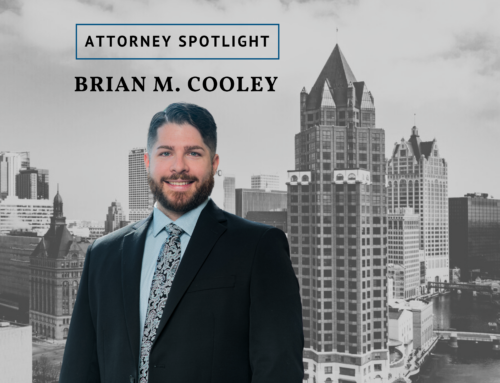Unfortunately, some Wisconsin businesses will not make it through the ongoing COVID-19 Crisis unscathed, and employers laying off significant numbers of employees must understand their obligations under the Wisconsin Business Closing and Mass Layoff Law (“WBCML”). Generally, employers subject to WBCML are required to notify the Department of Workforce Development (the “Department”), any affected employee, any related collective bargaining unit representative and the highest official of the municipality in which the affected employment site is located, no later than 60 days prior to a business closing or mass layoff.[i]
However, not every employer is subject to the WBCML notice requirement. An employer, as defined in the WBCML, is “any business enterprise that employs 50 or more persons in this state.”[ii] As such, employers with 49 or fewer total employees in Wisconsin are not subject to the WBCML notice requirements. However, this definition raises questions. For example, do I count all employees or just full-time employee equivalents? In the absence of additional guidance, it seems prudent to count all employees, even part-time ones.
Another question arises: “What if I own multiple businesses? Am I required to give this notice if, in the aggregate, all of those businesses employ more than 50 persons?” Unlike its federal counterpart, the WARN Act,[iii] WBCML does not statutorily aggregate employers based on ownership. In fact, the supplemental definition of employer in the administrative code considers wholly or partially owned subsidiaries that are independent of a parent corporation as separate employers.[iv] The Department’s policy is to only aggregate businesses that share the same management, workforce, and operational purpose.[v]
Even if an employer meets the WBCML “employer” definition, an employer laying off employees only needs to provide the WBCML notice if the layoff affects a sufficient number of employees to meet either the “business closing” or “mass layoff” requirements.[vi] As defined in the administrative code, an affected employee is “an employee that suffers a loss of employment” where that loss of employment results in “an employment termination (other than a discharge for cause, voluntary discharge or retirement), a lay off exceeding 6 months or a reduction in hours of work of more than 50% during each month of any 6-month period”[vii] (emphasis added). Moreover, the “business closing” and “mass layoff” definitions specifically exclude “new or low-hour employees” from the calculation.[viii] A “new or low-hour employee” is defined as any person who has either only been employed for fewer than 6 of the last 12 months or who, on average, works less than 20 hours a week.[ix]
A business closing is defined as a permanent or temporary shutdown of an employment site or one or more facilities or operating units at an employment site or within a single municipality that “affects” 25 or more employees, not including new or low-hour employees.[x] Therefore, an employer who anticipates a business closing, either temporary or permanent, must provide the WBCML notice when the employer has 50 or more employees in Wisconsin and 25 or more of those employees at a particular site are “affected,” as defined above. Conversely, if the layoff does not exceed 6 months, the WBCML notice is not required.
The WBCML defines a mass layoff as:
a reduction in an employer’s workforce that is not the result of a business closing and that affects the following number of employees at an employment site or within a single municipality, not including new or low-hour employees:
(1) at least 25 percent of the employer’s workforce or 25 employees, whichever is greater; or
(2) at least 500 employees.[xi]
In short, even if an employer does not temporarily or permanently shut down its business consistent with a “business closing,” and an employer must provide the WBCML notice if the employer has 50 or more employees in Wisconsin, and a minimum of 25 employees are “affected,” is defined above. Conversely, if the layoff does not exceed 6 months, no WBCML notice is required.
Additionally, the WBCML provides various exceptions to this notice requirement. Particularly relevant to the COVID-19 crisis is the exception for unforeseeable business circumstances. This exemption applies when at the time a notice would have been timely given, a business circumstance was not foreseeable.[xii] This is a facts and circumstance test and the application of the exception is left to the determination of the Department. Presently, the rapid onset of the COVID-19 Pandemic and government shutdown of almost all businesses would apply and the Department agrees.[xiii] However, the Department has issued guidance that employers subject to the WBCML should still provide the notice as soon as practicable, including as much information possible and then updating the notice when necessary.[xiv] Moreover, the administrative code encourages voluntary notice even in situations where notice might not otherwise technically be required.[xv]
Thomas J. Nichols, J.D., CPA, Marquette Law School 1979, is a shareholder with Meissner Tierney Fisher & Nichols S.C., Milwaukee where he focuses his practice on business and tax law.
Graham C. Garland, J.D., Georgetown University Law Center 2016, is an associate attorney with Meissner Tierney Fisher & Nichols S.C. where he focuses his practice on business law.
End Notes
[i] Wis. Stat. §109.07 (2020); Wis. Admin. Code DWD §279 (2020).
[ii] Wis. Stat. §109.07(1)(d) (2020).
[iii] See Federal Worker Adjustment and Retraining Notification Act, 29 U.S.C. §2101, et seq. (2020); Worker Adjustment and Retraining Notification, 54 C.F.R. §639.3(a)(ii)(2) (2020).
[iv] Wis. Admin. Code DWD §270.01(1)(d) (2020)
[v] Teleconference with Department on April 15, 2020. This parallels the administrative code definition of “Employment Site” Wis. Admin. Code DWD §279.01(1)(e) (2020).
[vi] See id. at §279.04(2)(a).
[vii] Id.
[viii] Wis. Stat. §§ 109.07(1)(b) and (f).
[ix] Id. at §109.07(1)(h).
[x] Id. at §109.07(1)(b).
[xi] Id. at §109.07(1)(f).
[xii] Id. at §109.07(6)(d); Wis. Admin. Code DWD §279.08(5).
[xiii] Wis. Admin. Code DWD §§279.08(a) and (b).
[xiv] Department of Workforce Development, Equal Rights Covid-19 Public Information-Information for Employers (last visited Apr. 20, 2020), https://dwd.wisconsin.gov/covid19/public/er.htm.
[xv] Wis. Admin. Code DWD §279.09(1).






